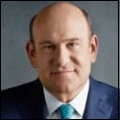By Pam Martens and Russ Martens: September 22, 2021 ~
Federal Reserve Chairman Jerome Powell took a few wonky questions from various reporters at his press conference today and then Jeanna Smialek, Federal Reserve and Economy reporter for the New York Times, was called on. Smialek was the first reporter to lead the elephant in the room out into the open. The exchange went as follows:
Smialek: “Prior to recent media reports, were you aware of the kind of security buying and selling that [Dallas Fed and Boston Fed] Presidents Kaplan and Rosengren were participating in last year? And I wonder if you thought those were appropriate?”
Powell: “So, no I was not aware of the specifics of what they were doing. So let me just say a couple of things about this subject. We understand very well that the trust of the American people is essential for us to effectively carry out our mission. And that’s why I directed the Fed to begin a comprehensive review of the ethics rules around permissible financial holdings and activity by Fed officials. So those rules are in many respects the same as those for government agencies plus a number of things that apply specifically to us because of our business. One of those is — sort of three things I would point to in terms of specific restrictions: one is ownership of certain assets is not allowed and that’s bank securities and other things; secondly, there are times when we’re not allowed to trade at all or buy and sell financial assets – that’s the period immediately before and during an FOMC meeting; and, third, there’s regular disclosures. So everyone’s ownership and activities are all disclosed on an annual basis. So, I would have had to go back and read people’s financial disclosure to know what their activities have been. This has been our framework for a long time and I guess you’d say it’s served us well. The other thing you would say is it’s now clearly seen as not adequate to the task of really sustaining the public’s trust in us. We need to make changes and we’re going to do that as a consequence of this. This will be a thorough-going and comprehensive review. We’re going to gather all the facts and look at ways to further tighten our rules and standards.”
Let’s stop right there for a moment. As Wall Street On Parade reported earlier this morning, the Fed’s trading rules, to anyone who has ever held a trading license on Wall Street, are a joke (that you could drive a Bentley stretch limo filled with insider traders through). The Fed’s trading rules consist of 284 words that appear on page 14 (Attachment 4) of a Fed document called the “Program for Security of FOMC Information.” The document is devoid of even a single mention of any of the following types of trading that should be prohibited for Fed officials: shorting the market, using derivatives to mask one’s trading, trading in S&P 500 futures contracts (which can be leveraged by 95 percent and trade almost 24/7 on weekdays); trading when one is aware that the Fed is about to make a market-moving announcement, regardless of whether or not it’s around an FOMC meeting; trading in securities that the Fed is buying up; trading in and out of the same security or futures contract, giving the appearance of timing the market; and so forth.
Also, Powell included the fact that Fed officials have to make annual disclosures while simultaneously admitting that he was not aware of Dallas Fed President Robert Kaplan trading in and out of S&P 500 futures to the tune of millions of dollars in each transaction while also making over $1 million dollar trades in rate sensitive stocks like Amazon, Apple and Facebook. That Powell was not aware clearly indicates that the disclosures were meaningless until a Wall Street Journal reporter, Michael Derby, with apparently far more curiosity than Powell, decided to actually look at those disclosures and break the story on September 7.
Immediately after Smialek posed her uncomfortable question to Powell, Steve Liesman, Senior Economics Reporter at CNBC, was called on. Liesman wanted to know if it was appropriate for Fed officials “to be owning the same assets that the Federal Reserve is buying…” Liesman also asked what the timeframe was for the Fed’s review of all of this.
Powell said there is no timeline yet and then launched into a defense of his personal holdings of muni bonds while the Fed was also buying up muni bonds. Powell made it clear that his muni bonds had been purchased many years before. In other words, in contrast to Kaplan, Powell wasn’t trading in and out of securities in 2020.
Powell fielded more wonky questions from other reporters and then Michael Derby of the Wall Street Journal was called on by a facilitator for Powell. Derby is the reporter who first opened this pandora’s box and has been turning up the heat in related articles ever since.
Derby reminded Powell that all 12 regional Fed bank Presidents had gone through the renomination process earlier this year. Derby asked Powell if anyone at the Federal Reserve Board level knew about the stock trading activity of Kaplan and Rosengren at the time they were renominated. He also asked if Powell still had confidence in Kaplan and Rosengren to do their job. (The nonprofit watchdog, Better Markets, is calling for both Presidents to either resign or be fired.)
Powell first said that the 2020 financial disclosures were just recently filed so that people at the Board could not have known about the trading at the time of the renomination review. As far as confidence in the two men, Powell said “no one on the FOMC is happy to be in this situation….”
Derby then dropped a bit of a bombshell, saying that he was aware that the Fed Board wouldn’t have had the 2020 forms but that in the case of Kaplan “similar trading was shown in years past” on his prior financial disclosure forms. (That Kaplan got away with it in earlier years may have emboldened Kaplan in 2020.)
Powell said the renomination review process is more about leadership at the regional Fed banks and the individual’s performance on the Federal Open Market Committee. (Isn’t unseemly trading a black mark on leadership?)
It was apparent from Powell’s answer that either no one conducting these reviews bothered to look at the trading activity of Kaplan or was competent to understand the significance of his trading activity.
The bigger picture here is that the Federal Reserve is the same institution that Congress put in charge of supervising the mega banks on Wall Street, allowing them to simultaneously own giant federally-insured banks as well as casino trading operations. Under this structure, for the first time in the history of banking in the United States, the largest U.S. bank, JPMorgan Chase, had been charged with, and admitted to, five felony counts since 2014. And on the very day of Powell’s press conference, this headline was running across Reuters’ news wires: “JPMorgan Faces Oil Bribery Probe in Brazil.”
It’s long past the time to break up both the Fed and the mega banks on Wall Street. The Fed should return to being just a central bank and stripped of its powers to supervise any bank in the United States. The mega banks on Wall Street should be separated so that no federally-insured, deposit-taking institution in the U.S. is part of a holding company that owns derivatives or stock trading operations, investment banking, brokerage or insurance companies.
This form of bank separation served this country well from 1933 until the Clinton administration repealed the Glass-Steagall Act in 1999. We’ve had bailout after bailout ever since then. It’s time for Congress to admit that things have gone hideously wrong since it approved the repeal of the Glass-Steagall Act and restore it.




